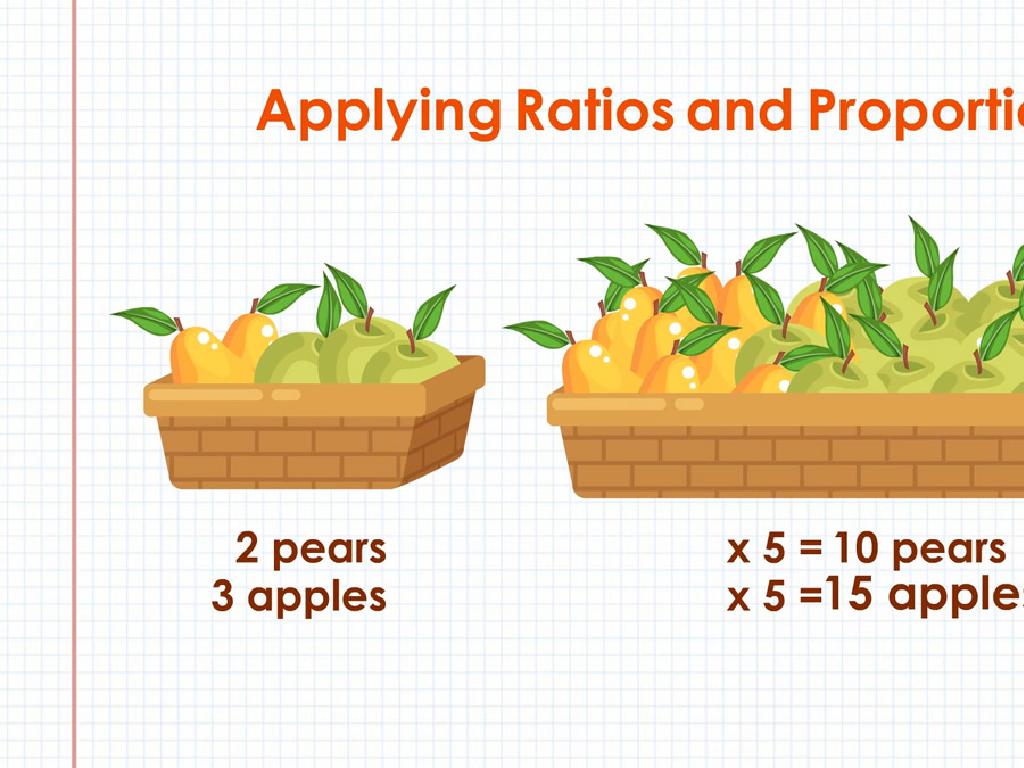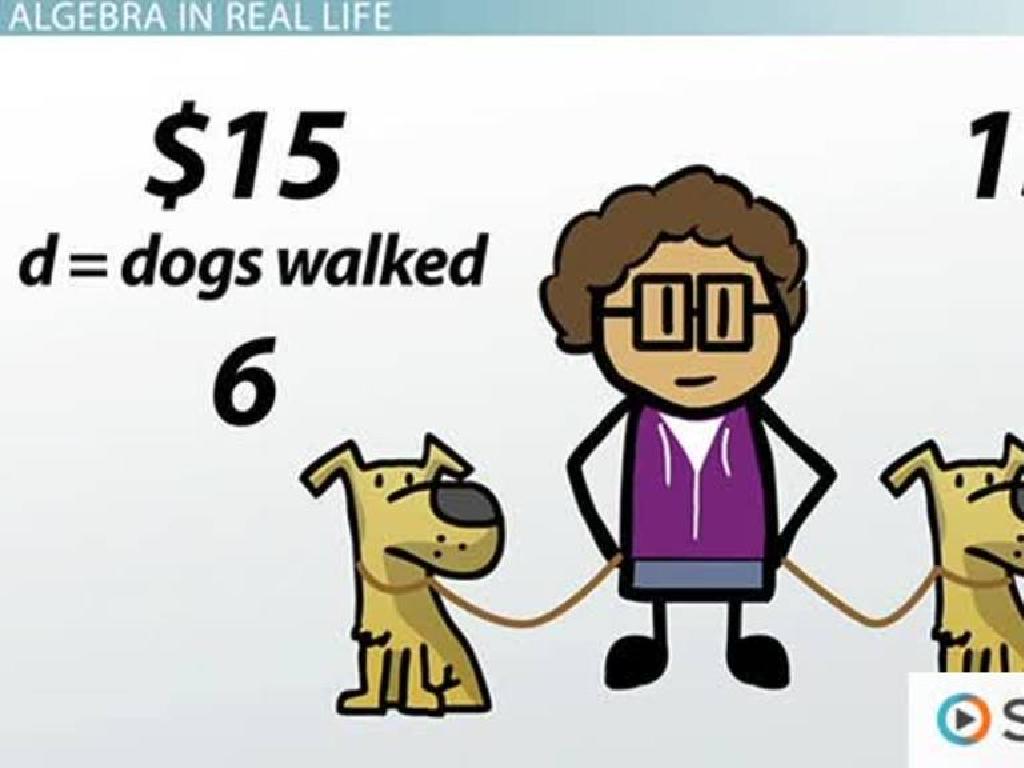Understand Quantity Supplied And Quantity Demanded
Subject: Social studies
Grade: Sixth grade
Topic: Supply And Demand
Please LOG IN to download the presentation. Access is available to registered users only.
View More Content
Welcome to Supply and Demand!
– Basics of market economics
– A market is where buyers and sellers meet to exchange goods and services.
– Defining supply and demand
– Supply is how much of something is available, demand is how much it’s wanted.
– The role of supply and demand
– They determine the price and quantity of goods sold.
– Their significance in economics
– Understanding them helps explain economic situations and consumer behavior.
|
This slide introduces the foundational concepts of supply and demand, which are crucial for understanding market economics. Begin by explaining what a market is and the interaction between buyers and sellers. Define supply as the amount of a product or service that is available to consumers, and demand as the desire of consumers to purchase goods and services. Emphasize how supply and demand work together to determine the prices of goods and services and the quantity available in the market. Highlight the importance of these concepts in understanding economic situations, such as shortages and surpluses, and in predicting consumer behavior. Use relatable examples like the demand for a popular toy during the holiday season or the supply of ice cream during summer to illustrate these points.
Understanding Demand in Economics
– Define economic demand
– Demand is the desire to own something and the ability to pay for it.
– Explore the Law of Demand
– As price decreases, demand usually increases, and vice versa.
– Discuss factors influencing demand
– Factors include income, taste, price of related goods, and expectations.
– How changes affect demand
|
This slide introduces the concept of demand, a fundamental element in the study of economics. Start by defining demand as not only the desire to purchase goods and services but also the purchasing power to do so. Then, explain the Law of Demand, which states that there is an inverse relationship between price and quantity demanded. Discuss various factors that can influence demand, such as changes in consumer income, shifts in personal taste, the price of complementary or substitute goods, and future expectations of prices. Emphasize that understanding these concepts is crucial for analyzing market behaviors. Use relatable examples, such as the demand for a popular toy during the holiday season, to illustrate these points.
Understanding Quantity Demanded
– What is quantity demanded?
– The total amount of a product consumers want to buy at a certain price.
– Price impact on demand
– As price decreases, people usually want to buy more.
– Ice cream demand example
– On hot days, more people want ice cream, showing demand can change with weather.
– Discussing ‘Law of Demand’
|
This slide introduces the concept of quantity demanded, a fundamental aspect of the supply and demand model in economics. Begin by explaining that quantity demanded is the specific amount of a product that buyers are willing to purchase at a given price. Highlight how changes in price can affect the quantity demanded, with the general rule that a lower price increases demand. Use the example of ice cream on a hot day to illustrate how demand can increase due to factors like weather, making it relatable for sixth graders. Conclude by discussing the ‘Law of Demand,’ which states that, all else being equal, as the price of a product falls, the quantity demanded will usually increase, and vice versa.
Exploring Supply in Economics
– Define the concept of Supply
– Supply is the total amount of a product or service available for purchase
– Understand the Law of Supply
– As price increases, the quantity supplied also increases, and vice versa
– Identify factors influencing Supply
– Things like costs, technology, and expectations affect how much suppliers offer
|
This slide introduces the concept of supply in the context of economics. Begin by defining supply as the total amount of goods or services that are available for purchase at any given price. Then, explain the Law of Supply, which states that there is a direct relationship between price and the quantity of goods supplied: as the price of a good or service increases, suppliers will want to sell more of it. Next, discuss various factors that can influence supply, such as production costs, technological advancements, and suppliers’ expectations for future market conditions. Use examples that are relatable to sixth graders, such as a lemonade stand or the supply of toys before the holidays. Encourage students to think of other examples and how different factors might affect the supply of goods they are familiar with.
Understanding Quantity Supplied
– Define quantity supplied
– The total amount of a product that businesses are willing to sell at a certain price.
– Price impact on supply
– As prices increase, businesses typically supply more because they can make more profit.
– Umbrella supply example
– On rainy days, stores may supply more umbrellas to meet higher demand, knowing people are willing to pay more.
– Graphing supply changes
|
This slide aims to help students grasp the concept of quantity supplied in the context of supply and demand. Quantity supplied refers to how much of a good or service producers are willing to sell at a specific price. It’s crucial to explain that there is a direct relationship between price and the quantity supplied; as the price goes up, so does the willingness to supply more, because sellers can earn higher profits. Use the example of umbrellas on a rainy day to illustrate how suppliers react to changes in demand due to weather conditions. Introduce the idea of graphing supply changes to visually represent this relationship, which will be explored in future lessons.
Supply and Demand: Finding Balance
– Interaction of supply and demand
– Supply and demand determine the market price and quantity.
– Equilibrium: Supply equals demand
– Equilibrium is the price at which quantity supplied equals quantity demanded.
– Factors causing shifts
– Changes in trends, costs, or expectations can shift supply and demand.
– Impact of shifts on equilibrium
– Shifts can cause surpluses or shortages, changing the market balance.
|
This slide aims to explain the fundamental concept of equilibrium in a market, where the quantity supplied meets the quantity demanded. It’s crucial for students to understand that supply and demand are not static and can shift due to various factors such as consumer preferences, production costs, and external events. These shifts can lead to a surplus where supply exceeds demand, or a shortage where demand exceeds supply, both of which push the market towards a new equilibrium. Use real-life examples like the effect of a new technology on the market for older products, or how seasonal changes can affect supply and demand for certain goods.
Class Activity: The Lemonade Stand Game
– Understand supply and demand through a game
– You run a lemonade stand
– Imagine you’re a business owner selling lemonade
– Adjust price and quantity with the weather
– Sunny days may increase demand, rainy days might decrease it
– Observe how changes affect your sales
– See the relationship between weather, demand, and your sales
|
This interactive class activity is designed to help students grasp the concepts of supply and demand by simulating a lemonade stand business. Students will make decisions on pricing and quantity of lemonade to sell based on different weather conditions, which will affect customer demand. Teachers should prepare different weather scenarios and guide students on how to adjust their business strategy accordingly. Possible activities include: 1) Role-playing different weather scenarios, 2) Group discussions on strategy, 3) Charting sales on a graph, 4) Comparing outcomes with classmates, 5) Reflecting on how their decisions impacted their sales. This hands-on experience will enable students to better understand the dynamics of supply and demand in a fun and engaging way.






